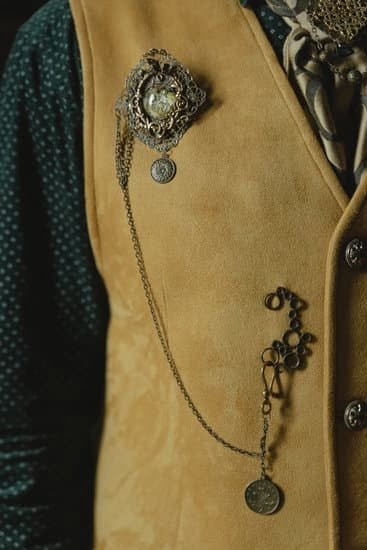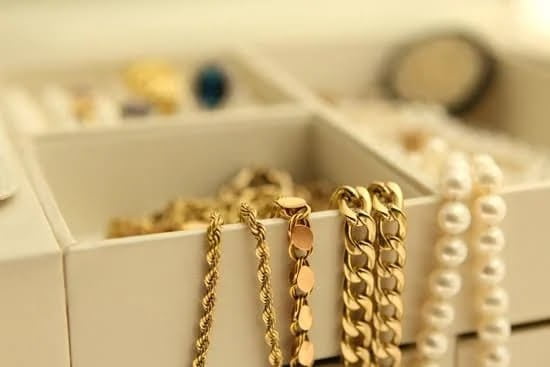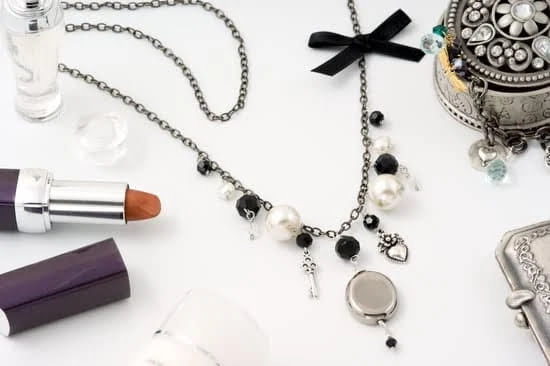What is the meaning of fine jewelry? Fine jewelry is more than just adornment; it is a symbol of status, wealth, and personal style. In this article, we will explore the world of fine jewelry, from its historical significance to the craftsmanship behind these exquisite pieces. We will also discuss the materials used in fine jewelry, the difference between fine and costume jewelry, and contemporary trends in the industry.
Fine jewelry has always held a special place in society, dating back to ancient times. From royal crowns to engagement rings, these pieces have been cherished for their beauty and cultural importance. In this section, we will delve into what defines fine jewelry and why it continues to be valued today.
Furthermore, we will examine the craftsmanship behind fine jewelry, including the artistry and techniques that go into creating these timeless pieces. Additionally, we will explore how fine jewelry retains and gains value over time as an investment, as well as provide tips on how to care for and preserve these precious heirlooms. Stay tuned as we take a closer look at the timeless beauty and elegance of fine jewelry.
The History of Fine Jewelry
Ancient Civilizations
Ancient civilizations such as Egypt, Mesopotamia, and Greece were known for their exquisite fine jewelry craftsmanship. The use of precious metals like gold and silver, along with gemstones like lapis lazuli, turquoise, and amethyst, adorned royalty and elites. Jewelry was not only a symbol of status but also held religious and symbolic importance in these ancient cultures.
The Renaissance and Victorian Era
During the Renaissance period, fine jewelry saw a resurgence in Europe with emphasis on intricate designs, symbolism, and the use of gemstones to convey meaning. Similarly, the Victorian era brought about a love for sentimental and romantic jewelry featuring cameos, lockets, and mourning pieces made from hair or enamel. These periods marked significant shifts in jewelry design and symbolism.
Modern-Day Fine Jewelry
As we move into modern times, fine jewelry continues to evolve with changing trends while still maintaining its timeless allure. Contemporary designers are pushing boundaries with innovative materials and cutting-edge techniques while still drawing inspiration from historical artistry. The meaning of fine jewelry has expanded to include self-expression, personal style statements, and cultural diversity in design.
Understanding the history of fine jewelry provides insight into its significance as more than just adornment; it is a reflection of human creativity, symbolism, and cultural heritage that has stood the test of time. This rich legacy continues to inspire today’s designers as they create pieces that embody both tradition and innovation.
Materials Used in Fine Jewelry
Fine jewelry is characterized by the use of high-quality materials such as precious metals and gemstones. These materials not only contribute to the beauty and elegance of fine jewelry but also add significant value to each piece.
Precious Metals
Precious metals such as gold, silver, and platinum are commonly used in fine jewelry. Gold, in particular, is a popular choice due to its durability and timeless appeal. The purity of gold is measured in karats, with 24k being the highest level of purity. Other metals such as silver and platinum are also valued for their luster and resistance to tarnishing.
Gemstones
Gemstones play a crucial role in fine jewelry, adding color, brilliance, and meaning to each piece. From diamonds and sapphires to emeralds and rubies, these precious stones are carefully selected for their clarity, cut, color, and carat weight. Additionally, semi-precious stones like amethyst, topaz, and opal are also used to create exquisite pieces of fine jewelry.
Combining Precious Metals and Gemstones
Fine jewelry often combines precious metals with stunning gemstones to create breathtaking designs. Whether it’s a diamond-studded gold necklace or an emerald-encrusted platinum ring, the harmonious combination of these materials reflects the artistry and craftsmanship behind each piece.
The use of precious metals and gemstones in fine jewelry elevates its significance and makes it a cherished possession for generations to come.
The Craftsmanship Behind Fine Jewelry
Fine jewelry is not just about the value of the materials used, but also about the artistry and techniques involved in creating each piece. The craftsmanship behind fine jewelry involves intricate and detailed work that showcases the skill and expertise of the artisan. From ancient times to modern day, fine jewelry has been created using a combination of traditional techniques and innovative methods, making each piece a work of art.
The artistry behind fine jewelry can be seen in the precision and attention to detail that goes into crafting every piece. Whether it’s hand setting precious gemstones, intricately carving designs into metal, or meticulously polishing each component, fine jewelry is a labor of love that requires a high level of craftsmanship. Artisans often spend years perfecting their skills to ensure that each piece meets the highest standards of quality and beauty.
Techniques used in creating fine jewelry vary depending on the style and design of the piece. For example, some pieces may require delicate filigree work, while others may involve intricate stone setting or metalwork. Artisans may use traditional tools alongside modern technology to create fine jewelry that is both timeless and contemporary. The combination of old-world craftsmanship with new innovations results in stunning pieces that appeal to a wide range of tastes and preferences.
In addition to the technical aspects, fine jewelry craftsmanship also encompasses creativity and innovation. Artisans often push boundaries and experiment with new materials or design concepts to create unique and avant-garde pieces.
Fine jewelry is not only about preserving tradition; it is also about embracing evolution and exploring new possibilities in design. As such, contemporary trends in fine jewelry often reflect a blend of time-honored techniques with cutting-edge creativity, resulting in pieces that are both classic and fashion-forward at the same time.
The Significance of Fine Jewelry
Fine jewelry holds significant symbolism and cultural importance across various societies and civilizations around the world. The meaning of fine jewelry goes beyond mere adornment; it often reflects the values, beliefs, and traditions of a particular culture. Throughout history, fine jewelry has been used to signify social status, wealth, power, and religious affiliation.
For example, in ancient Egypt, fine jewelry was not only worn for beautification but also held religious and spiritual significance. Pieces such as amulets, scarab pendants, and beaded collars were believed to offer protection and bring good luck to the wearer. Similarly, in traditional Indian culture, specific types of fine jewelry such as mangalsutra necklaces hold deep symbolic meaning related to marriage and marital status.
In many cultures, specific gemstones are believed to possess unique properties that can influence one’s life positively. For instance, in Chinese culture, jade is valued for its perceived ability to bring prosperity and longevity. Additionally, certain symbols and motifs commonly found in fine jewelry may carry cultural significance. For example, the use of the lotus flower motif in Asian fine jewelry often symbolizes purity and enlightenment.
| Examples | Cultural Significance |
|---|---|
| Ancient Egypt | Religious and spiritual significance |
| Traditional Indian Culture | Symbolic meaning related to marriage |
| Chinese Culture | Jade is valued for its perceived ability brings prosperity. |
| ( ) | ( ) |
The Difference Between Fine Jewelry and Costume Jewelry
When it comes to understanding the meaning of fine jewelry, it’s essential to distinguish it from costume jewelry. Fine jewelry is characterized by its high quality and craftsmanship, typically made with precious metals such as gold, silver, or platinum, and often adorned with genuine gemstones like diamonds, sapphires, or rubies.
On the other hand, costume jewelry is made with less expensive materials like brass, copper, or synthetic stones and is primarily designed for fashion purposes rather than long-term value.
- Fine jewelry is crafted using precious metals and genuine gemstones
- Costume jewelry uses less expensive materials like brass and synthetic stones
- Fine jewelry holds long-term value while costume jewelry is more focused on fashion trends
In addition to the materials used, another key difference between fine jewelry and costume jewelry lies in their value and longevity. Fine jewelry is considered an investment due to its enduring quality and potential to increase in value over time. Conversely, costume jewelry may be trendy and affordable but does not have the same lasting allure or appreciation in worth.
Overall, understanding the distinction between fine jewelry and costume jewelry provides insight into the significance of fine jewelry as a timeless symbol of elegance and sophistication.
Investment Value of Fine Jewelry
The investment value of fine jewelry is a topic of great interest to many collectors and enthusiasts. Fine jewelry, which is typically made from precious metals and gemstones, can retain and even gain value over time, making it a sought-after form of investment. But what exactly makes fine jewelry hold its value so well?
One reason for the investment value of fine jewelry is the materials used in its creation. Precious metals such as gold, platinum, and silver have inherent value due to their scarcity and desirability. Similarly, gemstones like diamonds, rubies, and sapphires are also valuable due to their rarity and beauty. As a result, the combination of these materials in fine jewelry ensures that it will always have a worth based on these factors.
Additionally, the craftsmanship behind fine jewelry plays a significant role in its investment value. The artistry and techniques used to create fine jewelry often require high levels of skill and precision, resulting in pieces that are not only visually stunning but also highly desirable. This aspect adds to the overall worth of fine jewelry as an investment, as collectors recognize the quality and expertise involved in its production.
Investment Value of Fine Jewelry: How It Retains and Gains Value Over Time
| Reasons for Investment Value | Examples |
|---|---|
| Precious materials such as gold, platinum, and diamonds | A 24-karat gold necklace with a diamond pendant |
| Craftsmanship displaying high levels of artistic skill. | An intricately designed platinum bracelet with detailed engraving |
Contemporary Trends in Fine Jewelry
In today’s ever-evolving fashion and jewelry industry, fine jewelry continues to undergo innovative transformations and push the boundaries of traditional designs. Contemporary trends in fine jewelry are characterized by a combination of innovation and fashion-forward designs that cater to the modern consumer’s evolving tastes and preferences. Designers are constantly experimenting with new materials, techniques, and styles to create pieces that are not only timeless but also reflective of current fashion trends.
One of the prominent contemporary trends in fine jewelry is the use of unconventional materials alongside traditional precious metals and gemstones. Designers have been incorporating materials such as wood, ceramic, leather, and even recycled materials into their fine jewelry pieces, resulting in unique and distinctive designs that appeal to a wide range of consumers.
This fusion of traditional and non-traditional elements has allowed for greater creativity and diversity within the industry, offering consumers a wider selection of innovative and fashion-forward fine jewelry options.
Furthermore, contemporary fine jewelry trends also emphasize personalized and customizable pieces that allow individuals to express their unique style and personality. From bespoke engagement rings to personalized pendants and bracelets, customization has become a popular trend in fine jewelry, allowing consumers to create one-of-a-kind pieces that hold sentimental value.
Additionally, technology has played a significant role in shaping contemporary trends in fine jewelry, with advancements such as 3D printing enabling designers to explore complex geometric shapes and intricate designs that were once difficult to achieve through traditional craftsmanship alone. Ultimately, contemporary trends in fine jewelry are driven by innovation, individuality, and a forward-thinking approach that seeks to redefine the conventional notions of luxury adornment.
How to Care for Fine Jewelry
Fine jewelry is not only a significant investment but also a treasured possession that holds sentimental value. Proper care and maintenance are essential to ensure that your fine jewelry retains its beauty and luster for years to come. Here are some tips on how to care for fine jewelry:
One of the most important aspects of caring for fine jewelry is proper storage. Store each piece separately in a fabric-lined jewelry case or a box with compartments to prevent scratches and tangles. It’s also important to keep your jewelry away from extreme temperatures, sunlight, and moisture, as these can damage the precious metals and gemstones.
Regular cleaning is crucial in maintaining the brilliance of fine jewelry. Use a mild detergent or specialized jewelry cleaner and a soft brush to gently clean your pieces. Be sure to rinse them thoroughly and pat dry with a soft, lint-free cloth. For delicate pieces or those with intricate designs, it’s best to have them professionally cleaned by a jeweler.
In addition to storage and cleaning, it’s essential to handle fine jewelry with care. Avoid wearing your jewelry while engaging in activities that may expose them to chemicals, rough surfaces, or impact. Remove your fine jewelry before showering, swimming, exercising, or applying lotions or perfumes to prevent damage. By following these maintenance and preservation tips, you can enjoy the timeless beauty of your fine jewelry for generations to come.
As you can see from these maintenance and preservation tips, caring for fine jewelry requires diligence and attention to detail. By understanding the proper ways to store, clean, and handle your precious pieces, you can ensure that they remain exquisite keepsakes for years to come.
Conclusion
In conclusion, the meaning of fine jewelry goes far beyond its material worth and investment value. It encapsulates centuries of history, craftsmanship, and cultural significance. From ancient times to modern day, fine jewelry has been a symbol of wealth, status, and personal expression. Its use of precious metals and gemstones, along with intricate artistry and techniques, sets it apart from other types of jewelry.
The timeless beauty and elegance of fine jewelry is not just about its aesthetic appeal, but also about the stories and traditions it carries. Each piece holds a unique symbolism that reflects the values and beliefs of the culture it originates from. Whether it’s a family heirloom passed down through generations or a modern innovative design, fine jewelry continues to captivate individuals across the globe.
As contemporary trends in fashion continue to evolve, so does the world of fine jewelry. From traditional designs to avant-garde creations, jewelry designers are constantly pushing boundaries while still preserving the classic allure of fine jewelry. This balance between innovation and tradition ensures that fine jewelry remains relevant in today’s ever-changing world. Ultimately, the meaning of fine jewelry lies in its ability to transcend time and trends, making it an enduring symbol of elegance and sophistication.
Frequently Asked Questions
What Is the Difference Between Fine Jewelry and High Jewelry?
The main difference between fine jewelry and high jewelry lies in the materials used and the level of craftsmanship. Fine jewelry typically consists of precious metals like gold, silver, or platinum, accompanied by gemstones such as diamonds, sapphires, or emeralds.
On the other hand, high jewelry is often seen as more exclusive and intricate, using the highest quality and rarest gemstones alongside exceptional craftsmanship.
What Is an Example of Fine Jewelry?
An example of fine jewelry would be a sterling silver necklace adorned with a single diamond pendant. Another example could be a pair of gold earrings with amethyst gemstones. Fine jewelry is often more accessible to a wider range of buyers due to its use of precious metals and semi-precious gemstones.
How Can You Tell if Jewelry Is Fine?
There are several ways to tell if jewelry is considered fine. Typically, fine jewelry will have a stamp marking indicating the type of metal used (e.g., 14K for 14 karat gold) and may also have a quality mark for any included gemstones.
Additionally, fine jewelry is usually sold by reputable jewelers who can provide certification for the authenticity of the materials used. The overall craftsmanship and attention to detail are also indicators of fine jewelry.

Welcome to my jewelry blog! My name is Sarah and I am the owner of this blog.
I love making jewelry and sharing my creations with others.
So whether you’re someone who loves wearing jewelry yourself or simply enjoys learning about it, be sure to check out my blog for insightful posts on everything related to this exciting topic!





